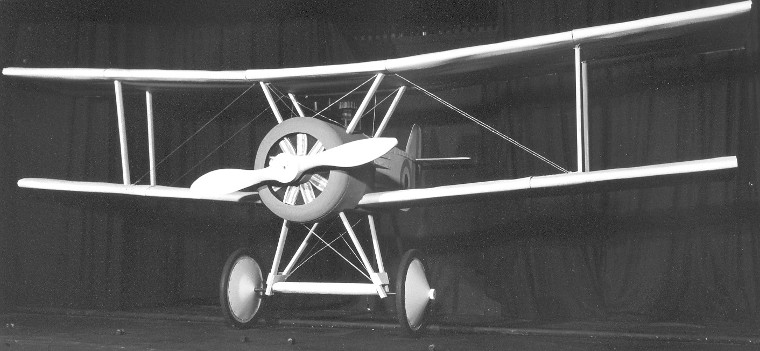
Airplane built by Bill Garrison and Ed Hannon
Driftwood Players
"Billy Bishop Goes to War" November 1985
Book, Music and Lyrics By John Gray
Directed by Michael Bennett

Airplane built by Bill Garrison and Ed Hannon |
|
Michael Wessells (Billy Bishop) Ron Greenwood (Piano Player) |
|
|
|
|
|
|
From The Daily World Sunday, November 10, 1985
"Amazing!" "Remarkable!" were words heard over and over again as a visibly moved audience left the Driftwood Theater Friday night after the opening performance of "Billy Bishop Goes to War."
After all, who could expect a lot of excitement from a play with only two people talking about World War I on an almost-empty stage?
But what happened when Michael Wessells and Ron Greenwood walked down the theater aisle and up the stairs to the stage in World War I uniforms was pure excitement. It was the unbeatable excitement of imaginations activated by two master storytellers — John Gray, who wrote the play, music and lyrics, and Wessells.
Billy Bishop was a real person, and for most of the play, Wessells is that real person. For other sizeable segments, he is the starchy British noblewoman who decided that the country-bumpkin Canadian should become an ace in the Royal Flying Corps; he is also two or three harrumphing British officers, a Cockney airplane mechanic, an insanely heroic British flying ace — the list goes on.
Through 80-odd pages of dialogue, Wessells develops the portrait of Billy Bishop as he changed from the naive young Canadian who cheerily sang, "It really didn't seem like war at all, at all." The story continues through the terrifying experiences that taught him how to stay alive in a job where the "life expectancy is about 11 days," and into his growing addiction to war as a way of life.
Finally there is his forced retirement and return 20 years later as a patriotic middle-aged recruiter for the World War II Royal Canadian Air Force.
He never fell out of character, no matter which of a dozen characters he was playing, never dropped or repeated a line, never let the audience's attention wander.
Through it all, Greenwood (who had less than three weeks to prepare) sits with unruffled poise and control at the piano, providing perfectly-synchronized sound effects, underscoring the action with some very effective music, and singing now and then both solo and in harmony with Wessells.
And we shouldn't forget the airplane that provides a thrill in the last act, built realistically by Bill Garrison and Ed Hannon, aided by set carpenters Doug Sipe, George Franich, Don Stubb and Vernon Oldfield. Slide projection by Gordon Miller and visual effects by LaMont Shillinger also add their bit.
In an exceptionally well-directed play, the action seems to flow naturally from the actors and the lines, and so it is a compliment to Michael Bennett that his contribution as director is so unobtrusive. But someone choreographed the delivery of the dialogue and the action that held the rapt attention of the audience — and did it very successfully.
Home Driftwood Players Inc. Webmaster Larry Tingwall